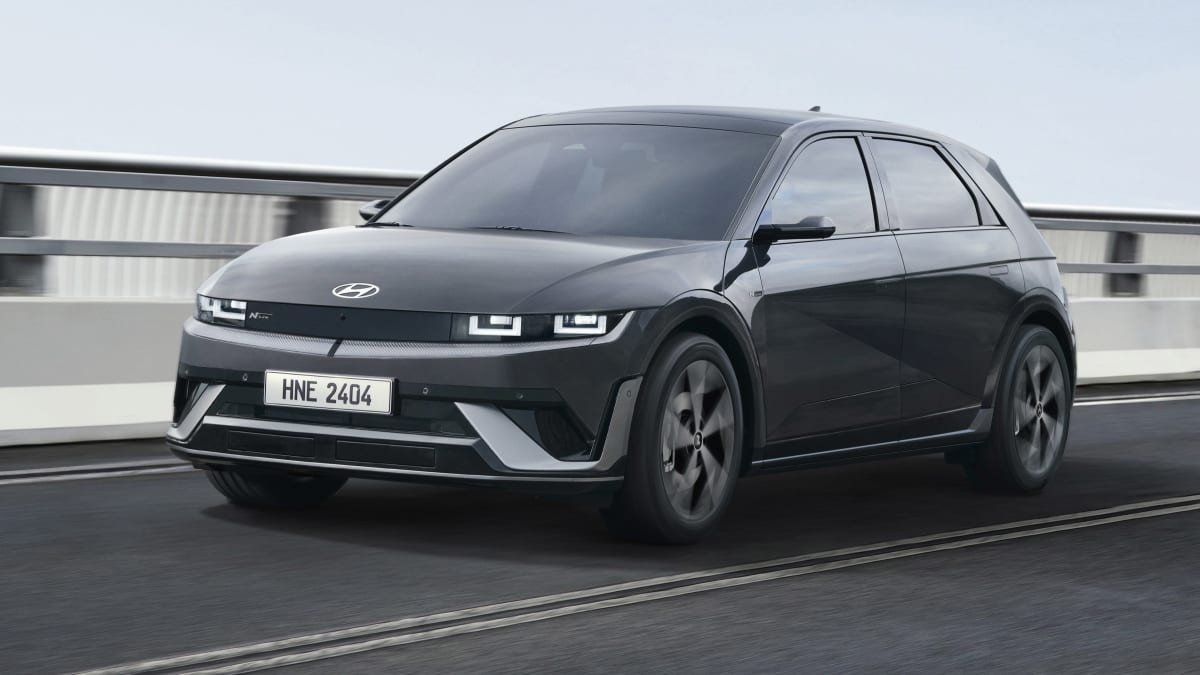The Hyundai Ioniq 5 is already three years old, so it has come in for an update with a larger battery, revised styling, new tech, and an N Line sports variant.
Electric Cars
The 2024 Hyundai Ioniq 5 electric car has been given a mid-life facelift with a larger battery pack, styling changes, and improved technology, ahead of Australian showroom arrivals from the middle of this year.
The Ioniq 5 line-up is already three years old – unveiled in February 2021 – so it is due for an update, which also introduces a sportier N Line version with design cues from the high-performance, $111,000 Ioniq 5 N performance car.
Australian deliveries of the updated Hyundai Ioniq 5 are due to commence in mid-2024, with prices to be announced closer to launch.
Leading the upgrades is a higher-capacity battery pack for the long-range version – 84kWh, up from 77.4kWh – which is shared with the Ioniq 5 N, and uses next-generation battery cells which are more energy dense.
Hyundai says it “increases … all-electric range,” but does not say by how much.
The current 77.4kWh model has between 454km and 507km of claimed WLTP driving range – while the 84kWh Ioniq 5 N still manages 448km, despite a wider and heavier body, higher rolling resistance tyres, and high-performance motors, thanks to its larger battery.
Motor outputs for the 84kWh variant have not been announced. The previous 77.4kWh model produced 168kW with rear-wheel drive, or 239kW with all-wheel drive.
Restyled front and rear bumpers extend the Ioniq 5’s overall length by 20mm to 4655mm, the rear spoiler has been extended by 50mm for improved aerodynamics, and there are new aero-efficient alloy wheel designs.
Inside, there is a redesigned centre console with shortcut buttons for the heated and ventilated seats, heated steering wheel and park assist, and a relocated wireless phone charger for easier reach.
The Ioniq 5 gains Hyundai’s new ‘ccNC’ infotainment software from the Ioniq 5 N, new Kona and updated Sonata, with more modern graphics, and over-the-air software updates.
It is likely to enable cars with embedded satellite navigation to offer wireless Apple CarPlay and Android Auto, after a conflict between Hyundai and one of the tech giants (Apple or Google) previously restricted wireless connectivity to vehicles without integrated navigation.
There is also a new steering wheel with ‘interactive pixel lights’, and Hyundai says “the arrangement of infotainment and air conditioning controls has been improved to enhance operational convenience.”
There is a new N Line variant (top of story) with unique bumpers, side skirts and 20-inch wheels, an N Line steering wheel and dashboard, metal pedals, front sports seats with N logos and two upholstery options, red contrast stitching, and black headlining.
New technology in some markets includes ‘hands-on detection’ in the steering wheel, updated lane-keep assist software, Remote Smart Parking Assist 2, and low-speed autonomous emergency braking that can detect obstacles on all sides of the car.
Also available in South Korea are adaptive LED headlights, Digital Key 2, a built-in dash cam, and remote controls for folding the rear seats.
Updates under the skin include a stiffer body to reduce “reduce low-frequency booming noise,” reduced motor noise, and extra sound insulation around the rear electric motor.
There is also a new shock absorber which “helps to alleviate vibrations from the road,” a stiffer cowl crossbar claimed to “reduce vibrations in the steering wheel”, and additional reinforcements around the rear wheels and lower body.
Hyundai says the body – including the doors and window pillars – have been strengthened for improved crash protection, while rear-side torso airbags have been added in South Korea, complementing the existing curtain airbags which protect rear passengers’ heads.
The 2024 Hyundai Ioniq 5 is due to go on sale in South Korea this month. Australian showroom arrivals – including the N Line variant – are due in the middle of the year.
Electric Cars Guide










